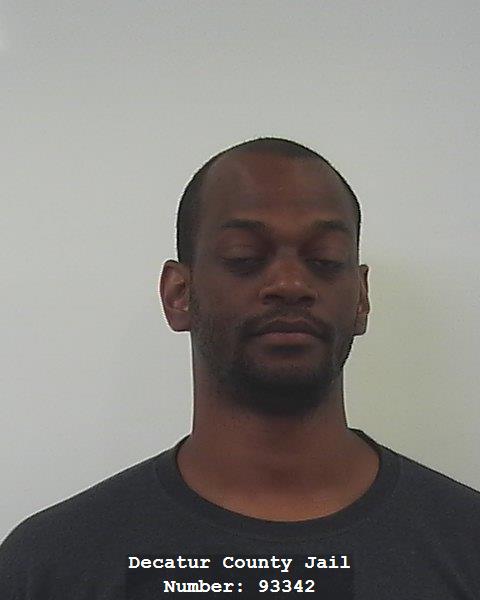The use of methamphetamine continues to be more prevalent than heroin in the Columbus area, but the criminal case gap is closing, authorities say.
“Heroin and meth are starting to run neck-and-neck,” said Bartholomew County Deputy Prosecutor Greg Long regarding investigations into illegal use or sale of the drugs. “They are getting pretty close to being about the same.”
In its first year of operation, the Bartholomew County Joint Narcotics Enforcement Team (JNET) investigated 79 methamphetamine cases in 2015, a number that dropped to 51 last year, according to annual reports by the Bartholomew County Sheriff’s Department.
However, heroin cases increased from 16 to 48 — a 200-percent increase — during the same period, resulting in only a three-case gap between the two types of drugs, the report stated.
[sc:text-divider text-divider-title=”Story continues below gallery” ]
With the fight to catch meth manufacturers and dealers longer in the making, “it seems like we’re playing catch-up by getting more heroin dealers,” the deputy prosecutor said.
The Joint Narcotics Enforcement Team is a combined unit of the sheriff’s department, Columbus police and the Bartholomew County Prosecutor’s office and is targeting the manufacturing and abuse of dangerous drugs in Columbus and Bartholomew County.
It was formed in January 2015, with Long assigned to personally prosecute all drug cases in Bartholomew County.
New tools
State lawmakers have given JNET, which now has six investigators, some new and helpful tools, Long said. More than a dozen measures addressing the epidemic of overdoses involving heroin and prescription painkillers were recently signed into law by Indiana Gov. Eric Holcomb and went into effect July 1.
One change welcomed by prosecutors allows them to combine the weight of heroin buys made between the same two individuals over a 90-day period when formally charging a defendant.
That could potentially raise a heroin-dealing charge from a Level 5 felony, punishable by one to six years, to a Level 2 felony, which carries a penalty 10 to 30 years in prison, Long said.
Another significant step taken locally last year was assigning a JNET member from the Sheriff’s Department to work directly with a Drug Enforcement Administration task force in Indianapolis, Long said.
“That deputy has been in places where they’ve seized pounds of meth and heroin,” Sheriff Matt Myers said. “He is a huge asset. And by working with the DEA, he provides us with both federal intelligence and federal resources.”
Not only is the identity of the officer kept confidential, but the successes of the collaboration resulting in arrests outside the community are also often kept quiet by the DEA, Long said.
“The feds investigate most of the bigger cases on their own,” Long said. “They may be getting bigger heroin dealers, but I’m not necessarily made aware of those arrests.”
Whenever heroin-related news such as arrests, convictions or overdoses surface, heroin dealers become tight-lipped and temporarily stop selling — especially to any new customer who could be a police informant, Myers said.
Since that can stop investigations dead in their tracks across an entire region, DEA agents typically keep their successes as quiet as possible, the sheriff said.
Challenges
The Columbus community recognizes that more work needs to be done to reduce demand for illegal narcotics, Mayor Jim Lienhoop said.
“It is imperative that we never let the drug dealers rest,” the mayor said, however. “Enforcement remains critical to our community’s response.”
Although Long agrees with the mayor, some emerging challenges are largely out of the control of JNET members, he said.
“The growth of the problem, with its overdoses and deaths, has been our biggest surprise,” the deputy prosecutor said. “We’re trying to do more, but the jail is bursting at the seams.”
Much of the jail overcrowding in Indiana is the result of a state law requiring most Indiana inmates convicted of the lowest felony crime level to serve their time in county jails rather than state prisons. As a result, the number of those Level 6 inmates housed at the Bartholomew County Jail has more than quadrupled in the past year.
The combination of more lower-level inmates with more drug-addicted prisoners requiring medical attention has created a double-edged sword and a nightmare, Long said.
When JNET was formed, law enforcement leaders expressed optimism that Long’s appointment would save lives by expediting the apprehension of heroin dealers. In cases that don’t involve undercover work, that has frequently been the case, he said.
But when dealing with confidential informants involved in multiple cases, moving too quickly to make an arrest could both endanger lives and create weaker cases, Long said.
“Most people don’t want to become an informant because it puts them in danger when they are identified,” Long said. “But drug dealers don’t generally open their doors and just let anyone in.”
Once an informant does get in, it may take several months to gather solid, admissible evidence — often on multiple cases — before arrests are made, Long said.
Going after large-scale heroin dealers also requires a different type of law enforcement approach known as intelligence-based policing, Myers said.
In this approach, built around the assessment and management of risk, it’s more important to keep mining for intelligence and data to prosecute repeat offenders than it is to make an quick arrest on one individual case, the sheriff said.
The extensive amount of time it takes to gather hard evidence frequently generates complaints from a frustrated public, Long said.
Often when someone insists an immediate arrest be made because “everybody knows” someone is dealing drugs, all they really know amounts to suspicion or hearsay, Long said.
“Investigations usually take a lot more than six months,” Myers said. “But if you have locations where you believe drugs are being sold, keep calling us. Just because you may not see an arrest now doesn’t mean one isn’t coming.”
Irrational behavior
One of the most frightening aspects of narcotic use is the irrational behavior frequently displayed by addicts, Myers said.
It often takes several months of treatment before addicts become clear-minded enough to seriously consider fighting their addiction, Myers said.
Even in the wake of publicity over overdoses and deaths, drug dealers providing tainted heroin have been successful in attracting buyers.
“When somebody is selling the bad heroin, there are people who will flock to them because they are thinking they don’t need as much to get high,” Long said.
Long uses that example, provided by investigators, to explain irrational behavior that exists, he said.
Such evidence has frustrated public officials.
A Middletown, Ohio, city councilman in June proposed a “three-strike” policy in which people who have overdosed on heroin at least two times would be denied emergency treatment the third time.
“So when it’s someone you love and care for, are you going to tell us to let them die?” asked Myers when the concept was brought up during a April 13 Sustained Community Dialogue conversation.
Besides moral objections to what some describe as state-sanctioned murder, the sheriff told the 40-person audience that enforcing a three-strikes policy would have a devastating psychological impact on first responders dedicated to saving and protecting lives.
Treatment
While addiction treatment is considered essential, Indiana ranks among states with the fewest drug treatment providers and the lowest public health spending, according to annual rankings from the Washington-based Trust for America’s Health.
During the recent forum, Myers expressed strong faith in the Substance Abuse Crisis Community Response Initiative formed through Columbus’ Healthy Communities coalition.
While Long agrees Bartholomew County needs evidence-based treatment options that are proven to work, he sees a number of formidable challenges.
“Money is the biggest factor,” he said. “It’s so hard to get people to buy into the upfront initial investment.”
Even if sufficient funding is secured, Long anticipates any location chosen for a new treatment facility will face strong resistance from neighbors.
Another way to approach the narcotics problem is creation of a drug court, which would use a collaborative approach to connect addicted defendants with services that include drug treatment interventions, Bartholomew Superior Court 1 Judge James Worton said.
Although the well-supported Veterans Court that Worton presides over operates in a similar fashion, both Long and the judge admit there’s substantially less public support for establishing a drug court in Columbus.
In order to address the heroin problem, Worton said residents must see their community for what it has become — not how they remember it.
“In terms of criminal justice, the Columbus we all knew growing up is no more,” Worton told the Bartholomew County Council in July. “We have to come to terms with that.”
While effective addiction treatment will likely be extremely expensive, the community must still retain realistic expectations, Long said.
Treatment will always be more effective for mostly law-abiding residents who turned to heroin after being denied long-term access to prescribed pain medication, he said.
In contrast, the prosecutor’s office sees several repeat offenders engaged in criminal behavior before they started using drugs, Long said.
“Once they are put into treatment, it will be entirely up to them whether they are going to take it seriously,” he said.
While there are no guarantees of success, Myers said maintaining the status quo on addiction treatment is not an option.
“We can stop the supply of heroin coming in. But if we don’t address demand with treatment, this problem will not go away,” Myers said. “If we do things together to address both supply and demand, we may not completely stop the problem but we will slow it down.”
[sc:pullout-title pullout-title=”Three key drug cases” ][sc:pullout-text-begin]
Here are three key cases involving the Joint Narcotics Enforcement Team that were highlighted in the Bartholomew County Sheriff’s Department 2016 annual report.
- On Sept. 27, JNET, with the assistance of the federal Drug Enforcement Agency, three individuals were arrested on multiple drug-related charges. After Bartholomew County experienced multiple drug-related overdoses, JNET identified this location as one of the main sources for bad heroin. In addition to the three arrests, JNET located about 5 grams of suspected bad heroin as well as an additional 9 grams for a total of 14 grams throughout the investigation. JNET also recovered more than $1,000 in cash and numerous drug-related paraphernalia.
- A significant amount of methamphetamine and counterfeit money was recovered when a search warrant was executed following a dealing methamphetamine investigation which ended with the apprehension of the methamphetamine supplier.
- JNET assisted in a burglary case that had a drug nexus in Bartholomew and Johnson counties. This investigation resulted in the recovery of a stolen semi-tractor trailer that contained 112 stolen engine blocks and the arrest of the suspect for the burglary as well as heroin-related charges.
[sc:pullout-text-end][sc:pullout-title pullout-title=”Pull Quote” ][sc:pullout-text-begin]
“When somebody is selling the bad heroin, there are people who will flock to them because they are thinking they don’t need as much to get high.”
— Greg Long, Bartholomew County deputy prosecutor
[sc:pullout-text-end][sc:pullout-title pullout-title=”Pull Quote” ][sc:pullout-text-begin]
“In terms of criminal justice, the Columbus we all knew growing up is no more. We have to come to terms with that.”
James Worton, Bartholomew County Superior Court judge
[sc:pullout-text-end][sc:pullout-title pullout-title=”Pull Quote” ][sc:pullout-text-begin]
“We can stop the supply of heroin coming in. But if we don’t address demand with treatment, this problem will not go away.”
— Matt Myers, Bartholomew County sheriff
[sc:pullout-text-end][sc:pullout-title pullout-title=”Pull Quote” ][sc:pullout-text-begin]
“It is imperative that we never let the drug dealers rest. Enforcement remains critical to our community’s response.”
— Jim Lienhoop, Columbus mayor
[sc:pullout-text-end]






